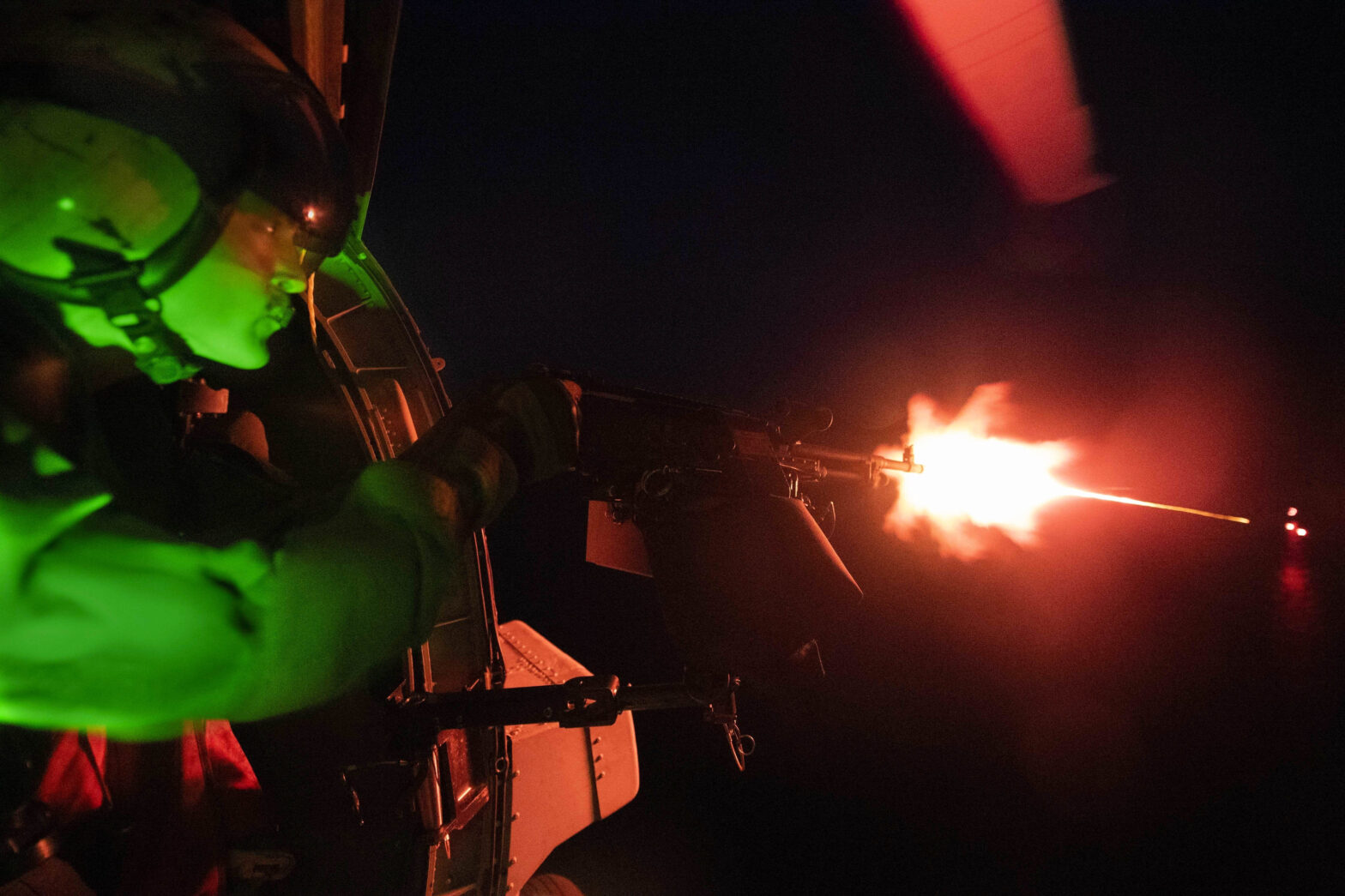When performing on a stable surface and well-lit environment, your visual, vestibular, and somatosensory systems are all sending information to your central nervous system (CNS) that is similar. But you aren’t always performing in perfect conditions. When you ruck through mud or sand, the information regarding the position of your ankles (somatosensory information) is going… Continue reading Which Sensory System Are You Relying on?
Tag: situational awareness
Target Acquisition in Multisensory Chaos
When in a highly stimulating environment you need to quickly determine if specific visual and auditory inputs are related. The faster and more accurately you determine the relationship between these two sensory stimuli (visual and auditory) the faster you can engage the target. “Failure to correctly identify whether multisensory events occur simultaneously and their sequential… Continue reading Target Acquisition in Multisensory Chaos
Training Situational Awareness with Specificity
Training situational awareness should be done with specificity. Our sensory systems are highly adaptable, meaning they can get stronger given the right stimulus. But they get stronger with specificity so training must be intentional. The challenge with training situational awareness capabilities in tactical athletes is the unpredictable conditions you must prepare for. To train with… Continue reading Training Situational Awareness with Specificity
Anytime. Anywhere.
The reality of your job is that you must be ready anytime, anywhere. You won’t always know what your operational tempo will be, what you’ll be sleeping under, or what training equipment you’ll have access to. This requires your training programs to be adaptable to anytime, and anywhere. I’ve worked as a Physical Therapist on… Continue reading Anytime. Anywhere.
Train Angular and Linear Acceleration/Deceleration
We move in both angular and linear planes. Angular planes are Yaw (like shaking your head “no”) Pitch (like shaking your head “yes”) Roll (like moving your ear down to your shoulder) Linear planes are Moving up/down Moving side/side Moving forward/back As a tactical athlete you want to ensure that your training program incorporates all… Continue reading Train Angular and Linear Acceleration/Deceleration
Train Sensory Chaos
As a tactical athlete you want to train for sensory chaos, this is called habituation training. Habituation is desensitizing your brain to sensory inputs so that your performance isn’t negatively impacted under conditions of sensory chaos. Because you perform in the most extreme and unpredictable conditions, training this skill is vital. I strip habituation training… Continue reading Train Sensory Chaos
Keep Your Head on a Swivel
The ability to move with speed and precision when your head is on a swivel is a skill. This skill can be broken down into specific components. Most individuals focus on the speed of their footwork, which is extremely important, but they neglect training of the speed of their head movements and integrations of these… Continue reading Keep Your Head on a Swivel
Blast Exposures and Young Onset Parkinson’s Disease
Subconcussive head trauma are sufficient in increasing vulnerability to developing young onset Parkinson’s Disease. [1] This includes subconcussive blast exposures. [2] There is currently no cure for Parkinson’s Disease. Current medical strategy is to decrease the impact it has on quality of life. As a Physical Therapist I’ve been part of healthcare teams doing that… Continue reading Blast Exposures and Young Onset Parkinson’s Disease
How to Own Chaos
A distinct characteristic of the tactical athlete is the ability to perform in extreme and unpredictable environments. The job demands the ability to maintain speed and precision of execution under conditions of chaos. One component vital for this capability is processing speed. I think of required processing speed as the change in sensory stimulus divided… Continue reading How to Own Chaos
Havana Syndrome: An Attack on Situational Awareness Capability
Recently the Director of the CIA has told Russia that if they are behind the multiple attacks on US personnel using what is suspected as directed energy, there would be “consequences”. [1] Havana Syndrome is the term used for the concussion-like symptoms the victims of these suspected attacks experience. These symptoms include dizziness, unsteadiness, cognitive… Continue reading Havana Syndrome: An Attack on Situational Awareness Capability









